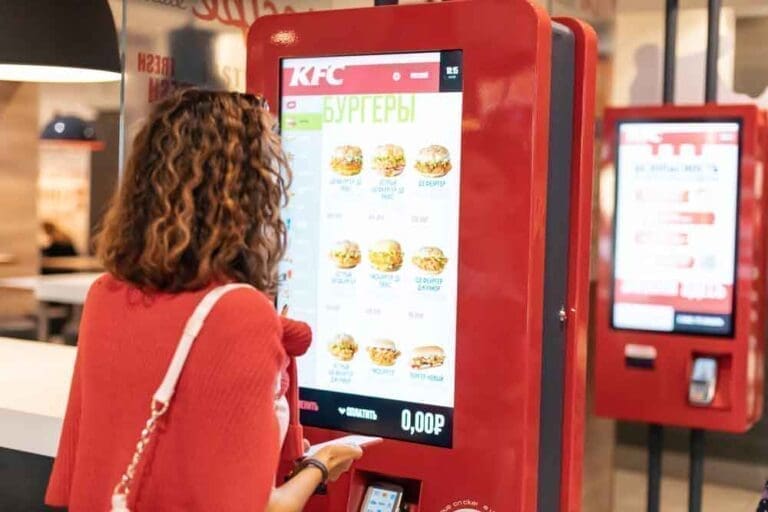Digital marketing’s advent has revolutionized multiple industries in profound ways. However, its influence on the food industry stands out remarkably. The Food Industry Association recently conducted a study, revealing digital marketing strategies have boosted organizational sales by 35% within just five years. Impressively, they also noted a 45% growth in the customer base in the food sector during this same period. The changing power of digital marketing is clearly highlighted by these statistics. This sector now has the potential for substantial growth and numerous opportunities.
In this innovative, highly connected era, businesses now have the capacity to tap into a broader audience base. They can engage with consumers in groundbreaking, creative ways. The food industry is harnessing the power of digital marketing tools and strategies. Not only to amplify sales but also to transform the way consumers perceive and interact with food brands.
Impact #1: Digital Marketing Helps Increased Brand Awareness

The first significant impact under scrutiny is the enhanced brand recognition. The advent of online promotional tools enables food enterprises to launch their visibility and recognition.
Consider the instance of Burger King, which executed a clever online campaign named ‘Whopper Detour’. This campaign made use of geolocation technologies to offer 1-cent Whoppers to customers who were physically near McDonald’s locations but ordered through Burger King’s mobile application. The results were nothing short of spectacular: the app’s downloads surged to over a million within 36 hours, and it claimed the top spot in Apple’s App Store.
Similarly, in 2019, Domino’s launched an online campaign called ‘Points for Pies’. The campaign used Artificial Intelligence (AI) to allow customers to earn points for any pizza (not just Domino’s) that they ate and photographed using the Domino’s app. This innovative strategy led to a 190% increase in app downloads and a 64% rise in online sales in just 12 weeks.
If you’re looking to truly grasp how digital marketing strategies can innovatively elevate brand recognition and sales, consider this case study. It delves into the methods used by Beyond Meat, a leading plant-based meat company. They effectively harnessed digital marketing strategies for their recent product launch “Digital Marketing Strategies for New Product Launch: A Case Study on Beyond Meat”.
Impact #2: Enhanced Customer Reach
Online promotional strategies have significantly impacted the food-related sector. This has allowed the sector to expand its reach to a global audience. One significant benefit of online promotional efforts is their ability to cross geographical boundaries. Food businesses can now reach potential customers worldwide, thanks to this feature. Regardless of their physical location, they can effectively connect and engage with a global customer base.
The concept of audience segmentation plays a crucial role in this context. Segmentation is a powerful tool businesses use to divide their customer base into smaller, more manageable segments. These divisions are based on a variety of factors such as demographics, customer preferences, and buying habits. The beauty of segmentation is that it allows businesses to customize their promotional efforts to match the specific needs and preferences of each segment. The result is a more effective promotional campaign, maximized to its full potential.
Take HelloFresh for instance, a company that has effectively boosted its online sales through a strategic use of SEO. You can delve deep into their compelling success story by clicking on this link. It offers an exhaustive analysis of their strategic approach and impressive results.
Like HelloFresh, any food business can use SEO strategies to boost online sales. A French bakery, for example, could promote its gluten-free products to health-conscious consumers worldwide. Using audience segmentation, businesses can customize promotions to each segment’s specific needs and preferences.
Impact #3: Digital Marketing Helps Improved Customer Engagement
The third impact turns around improved customer engagement. Social media platforms are a powerful means to interact with consumers, providing a more personal, real-time communication avenue. When utilized effectively, these platforms can cultivate customer community and loyalty, enhancing brand image.
In the food sector, enhanced customer engagement can be achieved through various methods. Interactive campaigns on social media can boost brand visibility. Encouraging users to share experiences enhances engagement. Utilizing user-generated content builds a consumer-centric brand image. Customer reviews and pictures contribute to authenticity. Prompt responses show commitment to customer satisfaction. Responsiveness to customer inquiries or complaints is key.
If you want to see a real-life example of how digital customer engagement can truly transform a brand’s image and growth, take a look at this Starbucks case study “Digitizing the Customer Experience: A Starbucks Case Study”.
Social media can turn casual food industry consumers into active brand advocates. This boosts both engagement and business growth. The Starbucks case study proves this. It shows digital customer engagement’s potential in today’s business world.
Impact #4: Data-Driven Decisions
The digital revolution significantly impacts the food industry through data-driven decisions. It allows for intelligent decision-making based on accurate data analytics. As the name suggests, these are decisions that are proven by concrete data, rather than instinct or guess.
In the current era, the overwhelming volume of data available can be harnessed to improve decision-making processes. For instance, a restaurant can analyze customer data to identify favored dishes. This insight can then guide menu adjustments. This approach ensures that decisions are based on real data, improving their accuracy and effectiveness.
In-depth analysis of data can also discover fascinating trends and patterns that may be less obvious. For instance, a bakery may discover that sales of a particular pastry are significantly higher on rainy days. This information could be used to optimize inventory and sales strategies, leading to increased profitability.
Furthermore, predictive analytics can be used to forecast future trends based on historical data. This tool is a game-changer for businesses, forecasting shifts in demand. It empowers them to adapt, keeping them at the forefront of their industry.
Impact #5: Increased Sales and Revenue

The next crucial perspective to consider is the effect of online promotional efforts on sales and revenue. It is undeniable that these modern practices deeply impact a company’s bottom line.
The advent of the internet era has changed promotional tactics, leading to an increase in the company’s earnings. Forrester Research predicts online sales will constitute 17% of all US retail sales by 2022. This is a significant leap from the 12.7% projection in 2017.
To maximize profits, it is imperative to adopt a multi-channel strategy. Harvard Business Review research shows that multi-channel shoppers outspend single-channel, in-store-only buyers. This reveals the profitability of a diverse shopping experience.
Furthermore, the power of personalized email campaigns cannot be ignored. Tailored based on customer preferences and behavior, these campaigns can significantly boost conversion rates. Such strategies not only increase sales but also foster customer loyalty, thereby securing a sustainable revenue stream.
For a deeper understanding of the effectiveness of personalized email campaigns, take a look at this insightful case study on Subway’s strategy: “Enhancing Customer Loyalty through Email Marketing: An Insight into Subway’s Strategy”.
.
Conclusion
In conclusion, it is evident that technological advancements in promotional strategies have greatly transformed the food sector. Brand recognition and customer expansion are some of the key outcomes of this shift. Improved customer interaction, data-backed decisions, and increased sales also underscore its viability.
These changes indicate a revolution in the way businesses in the culinary realm operate and interact with consumers. As the reliance on traditional marketing methods decreases, the benefits of adopting innovative promotional techniques become increasingly clear. Future challenges will lie in effectively utilizing these tools for sustained growth and profitability.
To further understand the impact of digital marketing, we also recommend you to check out this detailed study by Deloitte on “Digital Transformation in the Food and Beverage Industry”.



